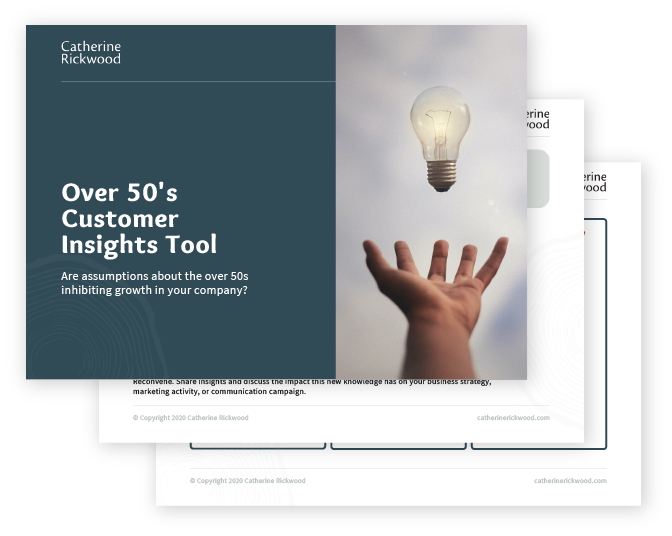Currently in Australia almost one-third of the population is over 50 years old. The same is true in the U.S., U.K., and Europe. In Japan almost half the population is over 50 years old. With or without a pandemic there is one certainty – populations are ageing. It’s a reality that won’t disappear, can’t be solved with a vaccination, and calls for our attention today. Population ageing impacts talent management, marketing, and business strategies in general. Longevity and ageing must be central to the planning process for future business success. Placed alongside AI, climate change, and sustainability. In this article I touch on ageism and its origins. However, my focus is on why ageing matters, concentrating on a few key topics leaders of change must consider to ensure the longevity of their business. First, the importance of changing a business environment based on the old-fashioned idea of retirement. Second, the impact of ageing on the future of work. And third, why a short term focus is inadequate, and 5-10 year planning essential to future success.
Companies such as BMW, Michelin, and Bunnings have already developed strategies to incorporate longevity into their business models. It starts with a conversation and small steps. Here’s a link to a free tool. Use this with the three leadership actions outlined at the end of this post.
The wall of ageism
Living longer, healthier lives should be hailed as good news. It provides choice and flexibility. It’s an opportunity to break free from an approach to work and education established during the industrial revolution. Equally importantly, we live longer due to the marvels of medicine, and greater knowledge about diet and exercise. Yet, perceptions of ageing are largely negative.
The narrative about older people is often tainted with undesirable assumptions. Assumptions derived from negative historical associations of ageing. Similarly, our observations of how previous or current generations age also taints perception. Ill-informed and populist news stories and articles, or a desire to live the outdated retirement “dream” further reinforce age stereotypes. Then there’s the advertising images of joy-filled, attractive silver-haired people in relaxed surroundings that fuel the “retirement dream” tale. These stories, images, and the difficulty of getting work when over 50 years old, all feed an ageist narrative and builds a wall that contradicts reality. People over 50 are active and often keen to continue working. Many are keen to continue being involved with work. Despite the rumours, most are technologically literate.
Consider: What associations do you and your leadership team have about people over 50 years old?
Beyond the “dream” retirement
If we want to live a long, healthy life our attitude, and having purpose and meaning in our lives is essential. In Japan, it’s called “ikigai” – the reason for which we get up every day.
Our mindset needs to shift from one where we stop work at a certain age, to one where there is no definitive endpoint to our working lives. In other words, we work at a different pace in different roles at different stages of our extended life. The old retirement paradigm of working until we’re 65 or 67 fails when people want the choice to work into their 70s or 80s. And, due to the length of our lives, for some people, they have no choice. They will have to work until later in life for financial reasons. Whether that be in a completely new role, as a mentor, contractor, or more flexibly within existing jobs. If they can get a job.
At first glance this idea can seem controversial. Contradictory. In Australia, our eligibility for the government age pension at 67 years of age suggests we’re given permission to stop working at this age. And I suspect for many, a life of never ending work feels like nothing other than burdensome and dispiriting. But, retiring retirement is a leadership topic critical to business strategy today, and firmly focused on the future. A topic that must be explored to build businesses adapted to the growth and impact of an ageing population.
Consider: How do 20+ more healthy years influence how you’re working today?
The leadership blindspot
Conversations about the future of work and workforce redesign often centre around technology. In particular, the impact of automation, and the implications of AI on jobs. Age or longevity rarely features in boardroom or executive leadership agendas. There’s very little awareness of the impact of longevity on worker choice and flexibility at any age. Furthermore, marketing strategies often ignore the 7.5 million people in Australia over 50 years old. All this despite the fact that most of us get there one day.
Various reasons for this blindspot exist. This includes:
- lack of representation of older people in marketing and communication teams within organisations;
- the dearth of employees over 45 years old in advertising, communications, and public relations agencies;
- assumptions about older people’s ability to learn new things, especially technology; and,
- ideas about potential mounting health issues or caring responsibilities that would lead to increased absences.
I also wonder if leaders simply feel overstretched with compliance and governance issues. Focused on ensuring profitability and shareholder return. Running the day-to-day business is the focus. Therefore the time, energy, human, and financial resources required for change don’t happen. The slight cynic in me also wonders if it’s something that leaders don’t consider impacting them. Nor do such strategies have an effect in the timeframe of their tenure. But that’s the point of leadership isn’t it? Leading on universal issues that matter, and contributing to change.
Consider: What are the implications of this for your workforce and talent management strategies?
Ageing and the future of business
Longevity is transforming the structure of the workforce. It already impacts available talent pools, training and development requirements, and corporate strategy. Therefore, how an organisation prepares for this requires leaders to “change the game and create the next game”.
A survey of executives from around the world revealed that 75% don’t forecast beyond five years.1 Based on these findings, the surveys authors suggest a different tactic. An approach that contrasts to the focus on 2-5 year strategies. They describe short-term tactics as ‘present-forward’ thinking, and suggest that future success requires ‘future-back’ thinking.
Future-back strategic planning for change
Future-back planning encourages leadership to create a vision for 5-10 years or more. Without future-back thinking organisations risk losing growth opportunities including the development of disruptive products. Subsequently hampering break-through marketing strategies. Bold new visions aren’t built. Additionally, talent management strategies that ignore the changing demographic landscape risk building a workforce unprepared for the future.
Future-back thinking doesn’t involve ignoring or foregoing 2-5 year plans. Short term strategies need significant leadership. They provide shareholder return and profits critical to sustaining the business today. Nevertheless, future-back thinking requires leaders to create a 5-10 year vision by:
- Dedicating 10-20% of their time to the process;
- Establishing an environment to nurture creativity and imagination, fuelled by an enthusiasm to experiment;
- Committing to a process unhindered by past financial data;
- Encouraging and demonstrating a growth mindset; and
- Challenging generational assumptions and ageist stereotypes.
Combined these parameters enable a vision that informs present business strategies. This sustains future growth to remain competitive. It enables the business to be innovative, and prepares it for the future.
From: Innosight, ‘A Future-Back Approach to Breakthrough Growth’
“Simply put, strategy is a way to win a game. Vision tells you what game you will play. The two go together, as vision without strategy is inspiration without a real way to get to action.”
Henry J. Ford is often quoted as saying that if he’d asked people what they wanted they would have said “a faster horse”. Steve Jobs, also considered a visionary leader, told a graduating class from Stanford:
“You can’t connect the dots looking forward. You can only connect them looking backwards. So, you have to trust that the dots will somehow connect in your future.”
Steve Jobs
Henry Ford and Steve Jobs had future-back thinking. Elon Musk deploys future-back thinking. A vision that extends well beyond even 10 years. Whether we consider ourselves in the realm of these visionary leaders is not the point. We can all contribute to constructing a vision. And create strategies that build towards an imaginative and creative future. To imagine the future and bring it back to actions we take today.
It’s time to think creatively about how the extra 20+ healthy years will be used. By doing so, we avoid clinging to the advertising-driven retirement nirvana. A fantasy of escape from the hamster wheel of work, an inbox, and stress of juggling life. A nirvana of a never-ending holiday perceived as our life raft to joy and happiness.
It’s time for business executives to take longevity seriously.
Consider: How can leadership carve out 10-20% of time for future-back thinking?
Leadership, longevity and the future
Raising the leadership gaze to consider an ageing population is future-back thinking in two areas. First, better understanding who the future customer will be and their needs. And second, redesigning people management strategies to evolve beyond todays ageist stereotypes and policies.
The future customer
Chances are a significant percentage of your current customers are over 50 years old. If they’re not, the question is “why not?”. And if they are, how well are their needs, wants, and pain points understood – beyond the stereotypes often tied to this age group? Whatever the answers are to these questions today, they’ll be different answers for this same segment in 10 years. The average age of your future customer will be older. Giving consideration to this provides an organisation with a competitive advantage. There’s a significant opportunity to build products and services to meet a future pain point. Creating and delivering against a yet unknown and unmet need.
Ageing and the future of work
Any discussion about the future of work must include ageing. This is crucial if leaders want to build a workforce for tomorrow, today. Age-neutral people management strategies encompass retention, training, recruitment, AND retirement transition. Therefore, conversations need to include people of all ages at all levels of the organisation. It’s a mindset shift. Workforce strategies based on the old educate-work-retire philosophy are no longer appropriate or relevant.
The average age of your future employees will be older. So, imagining how and where employees in the future will want to work, live, and play influences the work environment today. Already the global pandemic has catapulted people into a new way of working. Geographic location now irrelevant thanks to the prevalent use of technology. The groundwork exists. Still, one more iteration needs to occur. An iteration that gives employees choice throughout their working life. Choices about training, job opportunities, and extended leave without job loss.
People policies and strategies that support people in their dreams and aspirations beyond 50 matters. Now is the time to remodel the workplace beyond ageist stereotypes. To enable choice on the one hand, and facilitate knowledge sharing on the other. The idea lives in some companies such as BMW, Michelin, and Bunnings.
Ageing and future-back planning in action
In 2007, BMW undertook some future-back planning. They recognised that in 2017 the average age of their workforce would increase from 39 to 47 years old. To plan for this an experimental production line was set up for gearbox production staffed by older workers. The goal was to produce as many gearboxes as the production line with a younger workforce. Older workers were skeptical. However, within three months, the experimental production line proved successful. It produced 7% more gearboxes than the production line with younger workers. Absenteeism was halved. The lines defect rate dropped to zero. This result was achieved through a myriad of small changes. This included “better seats, new workbenches that could be adjusted to an individual’s height, wooden flooring that provided better cushioning and insulation.” In other words, simple ergonomic alterations led to improved results.

Photo by Julian Hochgesang on Unsplash
Michelin tyres introduced the Returning Retirees Program in 2010. It’s the equivalent of an alumni program. All Michelin retirees are eligible. Their skills tapped for specific short- or long-term projects. For example, one Michelin retiree spotted an opportunity to undertake a 6 month project on unconscious bias training following the killing of George Floyd. A month after applying through the Returning Retirees Program he received a call to say he got the gig.
BMW and Michelin are just two examples. In Australia, Bunnings is renowned for employing older people. In fact, older workers are valued for their knowledge, patience, and willingness to teach younger people. There is no retirement age at Bunnings.
Consider: Imagine the impact of future-back thinking about longevity on customers and staff? What’s created?
3 actions for a conversation about ageing for future business success
Increasingly, longevity is where the opportunity for future-back thinking and planning for leadership lies. When envisioning an unknown future, there are no guarantees. As Steve Jobs said, “you have to trust that the dots will somehow connect in your future”. When it comes to introducing longevity into the conversation, the steps are small. Personalising the discussion makes it real and tangible. Whether you start with your own executive leadership team, or a mix of colleagues across functional areas, here’s three actions to get the ball rolling.
- Invite colleagues to a future-back brainstorming session.
- Download the free insight tool from my website. Distribute it to the colleagues attending. Ask colleagues to return the forms to you 24 hours before the brainstorm.
- Present collated insight tool findings at the future-back brainstorming session. Discuss the implications.
- What are the consequences of results on the types of products and services you offer customers today?
- How can you meet future customer pain points with new products and services?
- Does this exercise change the way you would like to work today compared to the future? How?
Whether you use this insight tool or another, doesn’t matter. What matters is future-back planning, putting longevity on the leadership agenda, and taking action. Get in touch if you would like my support to create change in your organisation on the issue of longevity. Contact me via catherine@catherinerickwood.com.
1 Johnson, Mark W., and Josh Suskewicz. Lead from the Future: How to Turn Visionary Thinking into Breakthrough Growth. Boston, MA: Harvard Business Review Press, 2020.



